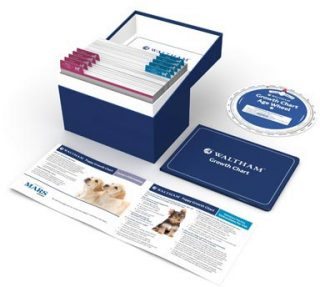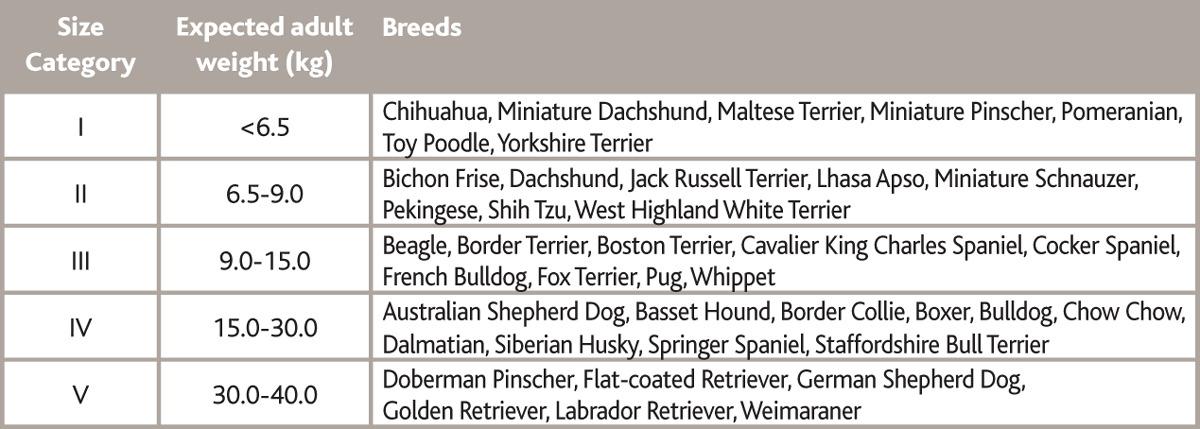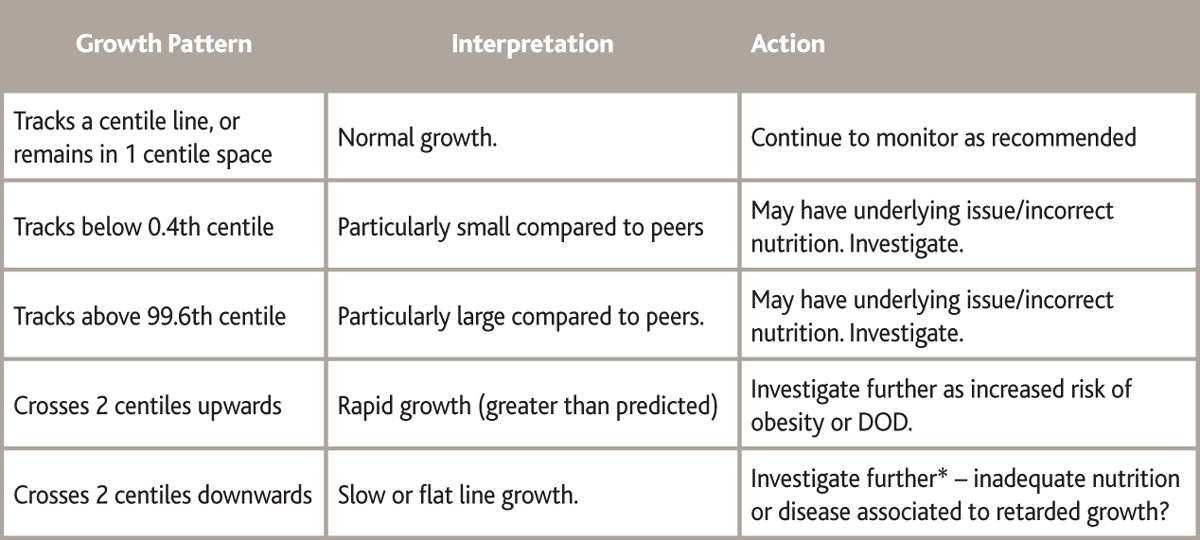5 Jan 2017
Learn how the new puppy growth charts could help pave the way for a healthier dog population, simply by tracking growth against reference standards.


Dr Alex German, Reader in Small Animal Medicine, Georgia Woods, Weight Management Clinic Nurse, at the University of Liverpool and Dr Tina Blackmore, Research Partner at The WALTHAM Centre for Pet Nutrition explain how the new Puppy Growth Charts could help pave the way for a healthier dog population, simply by tracking growth against reference standards.
The growth phase is critical to future health and well-being. In people, poor growth in infancy is associated with high childhood morbidity and mortality, whilst developmental disorders can lead to altered growth patterns. Furthermore, in children, gaining weight too rapidly or displaying a catch-up pattern of growth are known to be risk factors for lifelong obesity.
Health professionals use growth standards to monitor growth in infants, and growth charts developed by the World Health Organisation (WHO) are used by more than 100 countries worldwide. These provide a guide to how children should grow, and enable health professionals to reassure parents that their child is growing normally, or enable prompt investigation if growth deviates from normal.
As with children, growth patterns are an important health indicator in dogs. Dogs can suffer from diseases that have the potential to impact growth. Poor nutrition, dwarfism, megaoesophagus or portosystemic shunts may retard growth, whereas over-nutrition and rapid growth may cause developmental orthopaedic disorders such as hip or elbow dysplasia, or osteochondritis dissecans (OCD).
 As in children, a rapid growth rate is a risk factor for subsequent obesity in both cats and dogs. This association is of particular concern as obesity is now the most prevalent medical disease in pets, adversely affecting the quality of life of millions worldwide.
As in children, a rapid growth rate is a risk factor for subsequent obesity in both cats and dogs. This association is of particular concern as obesity is now the most prevalent medical disease in pets, adversely affecting the quality of life of millions worldwide.
Once a pet becomes overweight, the success of treatment and long term outcomes is often disappointing, and as for many chronic conditions ‘prevention’ of obesity is preferable than attempting to ‘cure’.
Growth standards for dogs could allow the early identification and intervention of at risk individuals as seen by paediatric health professionals.
However, creating growth standard that accurately models healthy growth in dogs presents a unique challenge due the vast array of breeds, shapes and sizes. The 1kg Chihuahua and the 100kg St Bernard have markedly different growth patterns with very small dogs reaching maturity as early as 8 months and larger breeds taking up to 24 months. Therefore, unlike the WHO growth standards, one size cannot fit all.
The first evidence-based growth standards were developed by The WALTHAM Centre for Pet Nutrition, in collaboration with Banfield Pet Hospitals (a network of over 800 primary care veterinary hospitals across the USA), the University College London (a worldwide centre of excellence in modelling growth), the University of Liverpool and the PDSA.
Data from healthy dogs in ideal body condition up to 3 years old were extracted from the records of 4 million dogs attending Banfield Pet Hospital and their 20 million bodyweight and age data points. The same mathematical modelling techniques as those to construct the WHO Child Growth Standards were used.
Charts were constructed for 6 size categories and each sex. The growth pattern of individual breeds and equivalent size category was consistent, except for category VI (>40 kg). Neutering before or after 37 weeks was generally associated with a slight upwards or downwards shift in growth trajectory, respectively. However, these deviations were small and dwarfed by inter-individual variability showing that healthy growth after neutering did not differ significantly from that of entire dogs.

To be of value the charts should reflect growth in different groups and populations of HEALTHY dogs, as well as determining the influence of illness or disease. In short, unless, patterns of growth are known to differ in dogs with health problems, the charts will have little value.
Datasets from dogs that were healthy, had abnormal body condition (underweight and overweight), or were diagnosed with diseases that might affect the growth pattern were compared to the charts.
This is unlike ‘unhealthy’ dogs that may cross 2 or more centile curves (Figure 1b). At a population level the charts can identify abnormal growth, with approximately 70% of dogs that became obese within the first 3 years of life, crossing 2 or more centile curves.
Similarly, approximately 60% of dogs with diseases putatively associated with accelerated growth (hip and elbow dysplasia, OCD and metaphyseal osteopathy) also cross 2 or more centile curves.
This means that centile crossing on the growth charts can be a guide to abnormal patterns of growth – not perfect, but not a bad extra tool to have!
These evidence-based growth charts are now available free of charge from Mars Petcare to vet practices in the UK as the WALTHAM™ Puppy Growth Charts.
The charts are presented as a user-friendly clinical tool kit that will allow veterinary professionals to monitor growth in clients’ dogs.
A range of supporting training and educational materials accompany the kits at www.waltham.com/resources/puppy-growth-charts/
The kit contains 10 different charts for 5 size categories (up to predicted adult weight of 40 kg) and both sexes. Each chart includes curves, called centile lines that show the predicted growth trajectory, and the 0.4th to 99.6th show the range of ‘healthy growth’ for that size category and sex (Figures 1a and 1b).
Weight measurements should be taken by either qualified veterinary surgeons or registered veterinary nurses to ensure that growth is correctly supervised and appropriate advice given to owners. Up to 6 months old, measurements should be taken monthly, with frequency decreasing to a minimum of every 3 months until adult weight is achieved.

Currently, besides visits for vaccination and neutering, formal visits to the veterinarian during early life can be inconsistent and irregular, with growth only discussed if concerns arise. This introduces a long period of time when limited veterinary guidance is given to owners during a crucial stage of life.
 Using the WALTHAM™ Growth Charts in the practice will encourage growth monitoring and facilitate conversations with owners regarding optimal veterinary care and nutrition, such as guidance on ecto and endoparasite control, behaviour and husbandry.
Using the WALTHAM™ Growth Charts in the practice will encourage growth monitoring and facilitate conversations with owners regarding optimal veterinary care and nutrition, such as guidance on ecto and endoparasite control, behaviour and husbandry.
The charts provide a tool to allow veterinary professionals to raise awareness about the importance of a healthy body weight for life. Dogs with healthy growth will enter early adulthood in optimal body condition and bodyweight.
Recording weight is precise and accurate, unlike body condition score (BCS) (10% bodyweight change is typically required to observe a change in BCS), helping to ensure that the benchmarked optimal bodyweight is maintained. Even small deviations (≤5%) can be promptly corrected through feeding and exercise, before obesity develops.
The potential for these growth standards is huge. Such a tool could facilitate proactive intervention by veterinary professionals, with the aim of:
